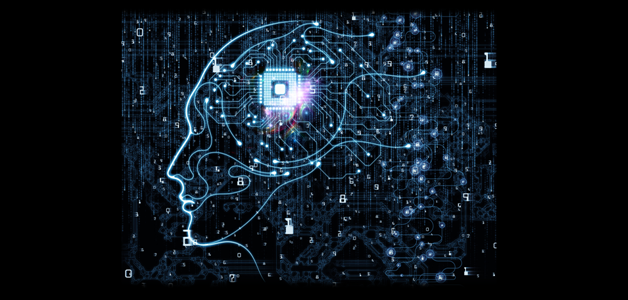As artificial intelligence (AI) continues to redefine technological innovation, a notable shift is occurring in the way AI computations are performed. Traditionally, AI models relied heavily on cloud computing, which, while powerful, can lead to latency, privacy concerns, and connectivity issues. Edge AI addresses these limitations by bringing data processing closer to the source, enabling faster, more secure, and efficient intelligence at the device level.
Defining Edge AI
Edge AI involves running AI algorithms directly on local hardware—such as smartphones, surveillance cameras, IoT sensors, drones, or autonomous vehicles—rather than depending solely on centralized cloud servers. These edge devices are equipped with the necessary processing capabilities to perform AI tasks like inference (and sometimes training) locally, allowing for immediate data analysis and decision-making.
This approach merges the strengths of edge computing with AI, promoting localized intelligence, faster responsiveness, and reduced reliance on cloud connectivity.
Key Components of Edge AI
| Component | Description |
| Edge Devices | Physical units such as cameras, wearables, or microcontrollers with sensors. |
| AI Models | Minimal and efficient algorithms built for edge hardware. |
| Inference Engine | Software frameworks that execute AI models (for example, TensorFlow Lite, OpenVINO) |
| Connectivity | Network interface for occasional synchronisation with the cloud. |
How Edge AI Functions
The following components make up Edge AI’s usual architecture:
- Edge Devices: Devices with built-in AI capabilities, powered by specialized chips (e.g., NVIDIA Jetson, Apple Neural Engine, or Google Coral) designed to run AI models efficiently.
- Pre-trained Models: AI models that are trained using large datasets in the cloud or on high-performance machines, then optimized and deployed to edge devices.
- On-Device Inference: The edge device processes data and generates insights or decisions locally, without needing to send data to the cloud.
For instance, a smart camera using Edge AI can identify intruders, recognize faces, and send alerts in real-time—without transmitting video to a remote server.
Key Advantages of Edge AI
1. Instantaneous Processing
With localized data analysis, Edge AI delivers near-instant decision-making, which is vital for applications like autonomous navigation, industrial robotics, and health monitoring.
2. Stronger Data Privacy and Security
By keeping sensitive data on the device, Edge AI minimizes exposure to cyber threats and enhances user privacy.
3. Lower Bandwidth Usage
Edge AI reduces the need for continuous data uploads to the cloud, saving bandwidth and cutting operational costs.
4. Reliable Offline Functionality
Edge AI devices can function even without internet access, making them ideal for remote or mobile environments.
5. Greater Scalability
With distributed processing, Edge AI supports wide-scale deployments without overburdening central systems.
Applications of Edge AI
- Autonomous Vehicles: Enables real-time decision-making for navigation, object detection, and obstacle avoidance.
- Smart Cities and Homes: Powers AI-based systems for surveillance, energy management, and automation.
- Healthcare: Facilitates real-time diagnostics and patient monitoring through AI-enabled wearables and equipment.
- Manufacturing and Industrial Automation: Supports predictive maintenance, quality inspection, and process optimization at the edge.
- Retail: Enhances customer experience with AI-driven personalization, checkout automation, and shopper analytics.
Challenges in Edge AI Implementation
Adoption of Edge AI is not without difficulties, despite its potential:
1. Limited Hardware Resources
Compared to cloud-based systems, edge devices frequently have limitations with regard to processing capability, memory, and energy.
2. Model Efficiency
AI models need to be scaled down or compressed to run effectively on edge hardware while maintaining performance.
3. Security Vulnerabilities
Even with local data processing, edge devices are susceptible to tampering or cybersecurity threats.
4. Deployment Complexity
Throughout a system of edge devices, managing & updating models can be resource-intensive and technically challenging.
The Road Ahead for Edge AI
Edge AI is set to become an integral part of next-generation technology solutions. The rise of 5G, advanced AI chips, and lightweight machine learning frameworks such as Tensor Flow Lite, PyTorch Mobile, and ONNX is accelerating its adoption. These advancements are fostering a future where edge and cloud AI work together, enabling hybrid intelligence that adapts in real time based on application needs.
As edge hardware grows more capable and AI algorithms become more efficient, we’ll see smarter, more autonomous systems that can make intelligent decisions wherever they are deployed.
Final Thoughts
Edge AI marks a transformative shift in artificial intelligence by decentralizing data processing and enabling immediate, context-aware decision-making at the source. From healthcare to manufacturing and beyond, its impact is already evident. While technical challenges exist, the benefits in speed, privacy, and efficiency make Edge AI a vital enabler for the future of connected, intelligent technologies.
